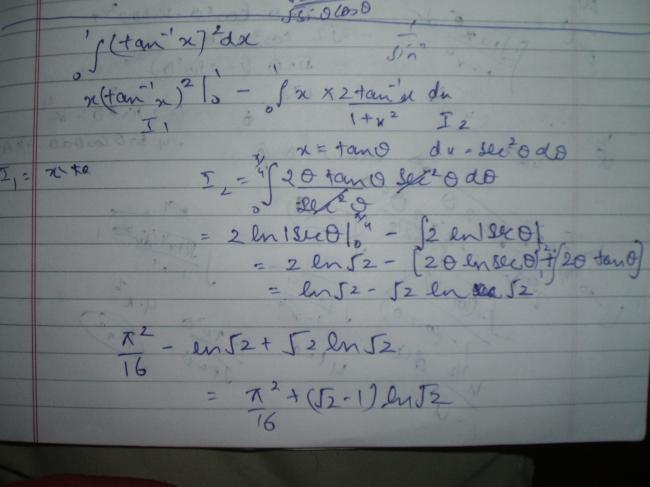nahi hua
42 Answers
yaa aman hw did u integrate after the philip'sssss method........[7][7][7]
indefinite does not exist...i m sure.....dunno about definite[7]
lekin philip ne direct hi integrate kar dia. limit will be 0,Ï€/4
im not sure mani.......
assumin tan inverse never goes negative in given interval......
integral is 0.245281203139486 i dont know whther ur expression also gives same value
yaar check kar le agaar theek hai to badia
aggar galat hai to phir se kar doonga[1]
KR bhai this ques is different
find the difference (spot the not)[1]
wrt post no 39, see this
http://www.artofproblemsolving.com/Forum/viewtopic.php?p=1072333#1072333
there u see solution by carcul.
ok what i meant was
by using by parts straight away we get
x(tan-1x)2 - ∫ (2xtan-1x/1+x2)dx
tan-1x = t
==> ∫2t.tant dt
note that second term by both methods is same [11]
i wonder whether limits will be same as well
wow mathemagic !![4]
no aman she means dx
is not there and btw sky wrong post urs it shud be ?? not //[3]
take (tan^(-1)x)^2 as first funcion and 1 as 2nd and use by parts method
for the second term use again by parts
dont' forget to simplify the second term i think it will be ∫tan^-1 t dt
sorry it will be a dirty method but should give answer
hey guys cann't we solve it by taking tan-1x=t.....
just a guess....
by putting tan-1x=t and assuming i am not sleeping(which i am)
it will be
∫t2/sec2t dt
what then [7][7]
*edited sorry it will be ∫t2sec2t dt
anyways what next [7]
